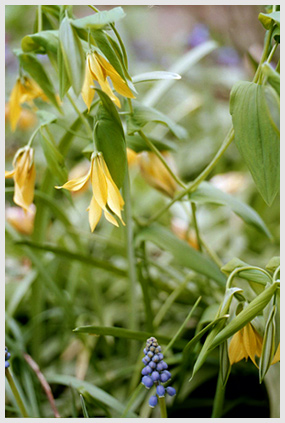 A mix of spring-flowering bulbs and perennials shares the sun at the edge of the garden. Photo: Lynette L. Walther
A mix of spring-flowering bulbs and perennials shares the sun at the edge of the garden. Photo: Lynette L. Walther Cleaning debris from ornamental beds now gives
Cleaning debris from ornamental beds now gives spring-flowering plants such as these bellworts
and grape hyacinths a healthy environment with
fewer plant pathogens. Photo: Lynette L. Walther

Contributing Garden Editor Lynette L. Walther is the recipient of the National Garden Bureau’s Exemplary Journalism Award and the IABC Silver Quill Award of Excellence. She is a member of the Garden Writers Association. She gardens in Camden.






